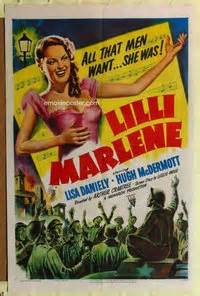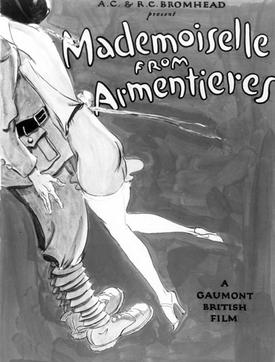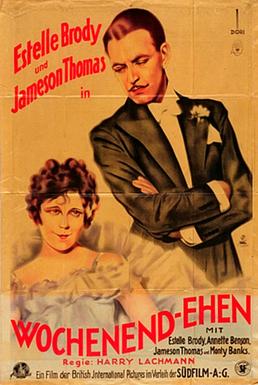
Imperial Airways was an early British commercial long-range airline, operating from 1924 to 1939 and principally serving the British Empire routes to South Africa, India, Australia and the Far East, including Malaya and Hong Kong. Passengers were typically businessmen or colonial administrators, and most flights carried about 20 passengers or fewer. Accidents were frequent: in the first six years, 32 people died in seven incidents. Imperial Airways never achieved the levels of technological innovation of its competitors and was merged into the British Overseas Airways Corporation (BOAC) in 1939. BOAC in turn merged with the British European Airways (BEA) in 1974 to form British Airways.

Field Marshal John Ligonier, 1st Earl Ligonier,, was a French Huguenot exile, born Jean Louis de Ligonier in Castres, Southern France. He had a long and distinguished career in the British army and was appointed Commander-in-chief in 1757.

Earl of Darnley is a hereditary title that has been created three times, twice in the Peerage of Scotland and once in the Peerage of Ireland.

Sir Alan John Cobham, KBE, AFC was an English aviation pioneer.

They Were Not Divided is a 1950 British war film, which depicted the Guards Armoured Division in Second World War Europe. It was written and directed by Terence Young, a former Guards officer who served in the campaigns depicted in the film.

John Stuart was born to Scottish parents, and was a very popular leading man in British silent films in the 1920s. He successfully made the transition to talking pictures in the 1930s and his film career went on to span almost six decades. He appeared in 172 films, 123 stage plays, and 103 television plays and series.
The Marriage Business is a 1927 British silent comedy film directed by Leslie S. Hiscott and starring Estelle Brody, Owen Nares and Jack Rutherford. It is also known by the alternative title This Woman Business.

Lilli Marlene is a 1950 British war film aimed for the US market and directed by Arthur Crabtree. It stars Lisa Daniely, Hugh McDermott, and Richard Murdoch. Stanley Baker is seen in one of his early support roles.

The House of Trent is a 1933 British drama film directed by Norman Walker and starring Anne Grey, Wendy Barrie, Moore Marriott and Peter Gawthorne. It follows a doctor who faces both a scandal and a moral dilemma when a patient of his dies while he is making love to a press magnate's daughter. It was also released as Trent's Folly. The film was made at Ealing Studios in London.

Mademoiselle from Armentieres is a 1926 British World War I silent drama film directed by Maurice Elvey and starring Estelle Brody, John Stuart and Alf Goddard. The film was Elvey's first collaboration with screenwriter Victor Saville. It was followed by a 1928 sequel Mademoiselle Parley Voo.

Estelle Brody was an American actress who became one of the biggest female stars of British silent film in the latter half of the 1920s. Her career was then derailed by a series of ill-advised decisions and she disappeared from sight for many years before re-emerging between the late 1940s and the 1960s in smaller supporting film and television roles.

Hindle Wakes is a 1927 British silent film drama, directed by Maurice Elvey and starring Estelle Brody and John Stuart. The film is adapted from Stanley Houghton's 1912 stage play of the same name, and reunites Brody and Stuart following their hugely popular pairing in the previous year's Mademoiselle from Armentieres. The film was also released under the title Fanny Hawthorne.

Kitty is a 1929 sound part-talkie British drama film directed by Victor Saville and starring Estelle Brody and John Stuart. In addition to sequences with audible dialogue or talking sequences, the film features a synchronized musical score and sound effects along with English intertitles. The film was adapted from the 1927 novel of the same name by Warwick Deeping and marked the third co-star billing of Brody and Stuart, who had previously proved a very popular screen pairing in Mademoiselle from Armentieres (1926) and Hindle Wakes (1927).
The Glad Eye is a 1927 British silent comedy film directed by Maurice Elvey and starring Estelle Brody, Mabel Poulton and Jeanne de Casalis. It was a remake of The Glad Eye, a 1920 film based on the play Le Zebre by Paul Armont. It was made at Twickenham Studios.
Sailors Don't Care is a 1928 British silent comedy film directed by W. P. Kellino and starring Estelle Brody, John Stuart and Alf Goddard. It is based on a novel by "Seamark".
Mademoiselle Parley Voo is a 1928 British silent drama film directed by Maurice Elvey and starring Estelle Brody, John Stuart and Alf Goddard. It was made as a sequel to Elvey's earlier hit Mademoiselle from Armentieres (1926), and was equally successful. Both films refer to the popular First World War song Mademoiselle from Armentières. It was made at Lime Grove Studios in Shepherd's Bush.
The Plaything is a 1929 British part-talkie sound romance film directed by Castleton Knight and starring Estelle Brody, Heather Thatcher and Nigel Barrie. The film was a mixture of silent and sound film as it was released during the transition period following Blackmail. It was based on the play Life Is Pretty Much the Same by Arthur Jarvis Black. It was made by British International Pictures at Elstree Studios.

Weekend Wives is a 1928 British silent comedy film directed by Harry Lachman and starring Monty Banks, Jameson Thomas and Estelle Brody. It was made at British International Pictures's Elstree Studios. The film is set in Paris and resort town of Deauville.
Geoffrey Arthur Virley Tyson FRAeS OBE was an RAF officer, barnstormer and test pilot. He is best known for his aerobatic skills and the test flying of the Saunders-Roe SR.A/1 and Princess flying boats.

Mademoiselle From Armentieres is a 1927 war thriller novel by the British writer John Rhode, the pen name of author and First World War veteran Cecil Street. It takes its title from the popular wartime song of the same name. The novel was promoted in conjunction with the 1926 film Mademoiselle from Armentieres and the cover featured the film's star Estelle Brody. The author is better known for his long-running series of detective novels featuring Doctor Priestley.














